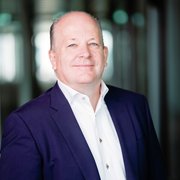The German data center market is expected to experience significant growth in the coming years, due to the growing demand for computing power driven by trends such as artificial intelligence (AI), high-performance computing (HPC) and edge computing. However, the industry also faces major challenges, particularly the tightening of legal requirements, which could slow down market expansion.
As more applications emerge for various areas of work and life, the flood of data in Germany is increasing, along with the demand for computing power. Currently, Germany ranks 27th globally and 11th in the EU in terms of digitalization. Hyperscalers like Google, AWS, and Microsoft, as well as corporate customers, will increasingly demand data center capacity in the coming years.
AI, HPC and edge computing require additional capacity
The primary driver of increased capacity needs is the demand for AI applications. Many AI applications require high levels of security and data sovereignty, prompting more companies to plan corresponding capacities within Germany to mitigate risks.
Performance-intensive applications like AI and HPC are already used by many companies across various sectors. After years of HPC capacities migrating to Nordic countries, there is now a strong effort to establish more HPC capabilities in Germany.
Another significant trend is edge computing. While large-scale data centers with up to three-digit MW capacities have grown, smaller edge deployments are also on the rise. Decentralized and integrated urban locations, including smaller data centers, are emerging in many places. However, there is still a shortage of operators.
Energy Efficiency Act: Challenge or opportunity?
The potential for the German data center industry to meet growing demands is substantial, but there are hurdles that should not be underestimated. For instance, the tightening of legal regulations and technological barriers poses a risk that expansion efforts may shift focus to other European countries.
In particular, the proposed Energy Efficiency Act presents a significant challenge. It mandates that data center operators supply their surplus heat to external customers, particularly local authorities and district heating providers.
Ultimately, all operators will have to achieve the same decarbonization targets, and successful waste heat utilization requires seamless collaboration among all parties involved. Although the first district heating projects are already being implemented in urban areas, there is limited interest in connecting older high-calorific district heating networks to data centers with low-calorific surplus heat.
The Act sets a power usage effectiveness (PUE) target of 1.2 for all data centers starting operating after the 1st July, 2026. Many projects currently in the final planning stages may need to be redesigned to comply with this regulation.
Lack of space and power capacity
Additional challenges in developing new projects include the scarcity of suitable land and renewable energy sources, as well as a lack of grid capacity in top-tier regions. As a result, future capacities can only be planned medium to long term. Given that the waiting time for available electricity can exceed ten years, alternative energy solutions in microgrids are being increasingly promoted.
Renewable energy doesn't suffice
With the phase-out of nuclear power, Germany’s energy mix is shifting again. Apart from the shortage of hydropower and the overall lack of capacity for renewable energies, electricity from wind and solar power is weather-dependent and cannot be efficiently stored. It is, therefore, impossible to meet 100% of electricity demand from renewable sources for companies and private consumers in Germany.
Nevertheless, the Energy Efficiency Act requires a 50 percent share of renewable energy from January 2024, and 100 percent from January 2027.
Forecasts for 2024 and beyond
Despite the aforementioned challenges, Germany is unlikely to lose its global role and attractive environment in the data center market. However, there is a risk that hyperscalers will shift their priorities to European countries with fewer regulations and more available resources, potentially slowing the pace of digitalization in Germany.
Given the high demand for virtualization, automation, communication, HPC and AI within secure structures, the demand for data center capacity is expected to continue driving market growth.
Currently, data center projects with hundreds of MW are under development in the top Tier 1 cities, Frankfurt and Berlin, primarily for hyperscalers or on their behalf. New projects are also planned in Tier 2 locations like Duesseldorf, Hamburg, Nuremberg, and Munich, mainly by enterprise operators and colocation providers. These future capacities will impact existing data centers.
To create new capacity and meet growing demand, data center operators and developers should consider the following trends and recommendations:
- Plan for medium and long-term availability of real estate and electricity
- Emphasize sustainable design
- Implement lean design and build processes
- Tailor designs to meet end-user requirements
- Reuse waste heat
- Adapt to new standards and limits set by the Energy Efficiency Act
- Increase edge deployments

